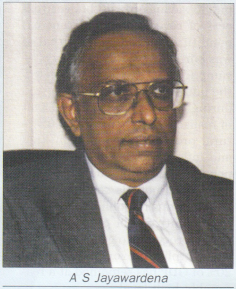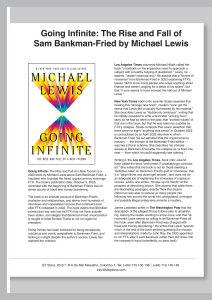Anyone who has lived through the period since independence will not deny that, generally speaking, the living standards of the people of Sri Lanka have improved considerably. By how much, is a question that is difficult to answer because our perspectives of good life vary from person to person and there are no reliable statistical measures to make the evaluation. Now that we are approaching half a century as an independent nation, it may be useful to start a review process.
At the time of independence, in 1948, Sri Lanka had a population of 7,244,000 with an average annual per capita income of about Rs. 400. A more reliable later estimate of 1950 placed the Gross Domestic Product (GDP) per capita at Rs 550. By 1960, there was improvement to Rs 660, and thereafter to Rs 2,853 in 1978 and Rs 36,545 in 1995. These figures which are based on current prices hide the effects of price increases, which were modest in the earlier period (upto about 1972), but quite pronounced later. Unfortunately, no comparable (net of inflation) series is available for comparison. Expressing the data in US Dollars too is fraught with problems, because the exchange rates until recently were administered (not market-related) rates. For whatever it is worth, the average incomes translate as about $120 in 1948 $140 in 1960. $183 in 1978 and $713 in 1995.
Economic Growth
How did we fare when compared with the rest of the world?
Here again, we can only form approximate Judgements because statistics are not quite comparable. It is widely accepted that in the beginning of the fifties, living conditions in Sri Lanka were similar to Singapore and Malaysia and perhaps better than in Thailand, Korea and Taiwan, but all of them have substantially outpaced Sri Lanka in development. Today, our per capita income of $703 compares with $27,992 of Singapore, $10,156 of Korea, $4,244 of Malaysia. $2,812 of Thailand; but ahead of India’s $369, Pakistan’s $406 and Bangladesh’s $249. School enrollment in 1946 was 945,000 or 41 percent of the population. By 1995, it had risen to 4,351.022 or 72 percent. As a result, the literacy rate which was 58% in 1946 (male) 70%, female 44%), had improved to 90% in 1994 (male 93%, female 88%). Large investments in free medical care and disease control dramatically reduced the death rate (13 per 1000 in 1948. to 6 in 1994), and raised life expectancy to 72 years. Because of these and other achievements, the UN human Development Index (maximum 1.0) assigns a score of 0.70 for Sri Lanka, which compares with 0.44 for India, 0.48 for Pakistan and 0.36 for Bangladesh. Although, Sri Lanka’s score ranks her among countries with much higher incomes, it should be noted that here too, she has fallen behind countries such as Korea, Malaysia and Thailand.
At the outset, governments were very concerned about the high rate of population growth at around 2.7%(1948), but it showed a steady decline in later years, largely on account of spread of education and health services, to the current rate of 1.1% (1996). The labour force which was 36% of the population has risen to 49% in 1996, with a large influx of females to the labour market. Unemployment appears to have been about 12% of labour force at independence, rose sharply to over 20% in the midseventies and has declined to around 11-12% at present. Emergence of a youthful and educated unemployed labour force in the sixties and seventies evidently led to social unrest, as indicated by the 1971 and 1988 insurrections and the ‘ethnic problem’.
Changes in Policies
Sri Lanka’s economy since independence has grown at an annual average rate of about 4% with per capita incomes rising at nearly 2%. Since the recent decline in population growth, these two rates have moved closer. However these average figures conceal substantial variations between periods when policies changed. In the initial phase (1950-60), when the relatively free post-war economy came under increasing regulation with substantial capital outflows and rising imports, economic growth averaged 3%. Thereafter, the country was faced with serious economic problems, with export incomes declining and foreign reserves down to alarming levels. Faced with an option between exchange rate adjustment or import restriction, the country chose the Latter. This period. 1960-65 was the first phase of state intervention and economic growth slowed down marginally.
An attempt was made to liberalize the economy with a mild exchange rate and fiscal adjustment during the next 5 years, 1965-70, when economic growth accelerated to 5%. This was followed by 7 years of increasing controls of regulation from 1970-77 the second phase of the controlled economy – when growth declined to 2.5%. This model proved untenable in view of the hardships and inefficiencies. Since 1978 upto now, we see the open economy phase, during which the economic growth rate has doubled. By this time, even the Bretton Woods institutions had abandoned the concept of the fixed exchange rate. and the floating of the Rupee in 1978 gave an added policy instrument in managing the economy. Trade was liberalized immediately and industrial regulation was abandoned a decade later. Prohibitive tariffs were lowered dramatically to promote export competitiveness. Exchange controls on current transactions were lifted in 1994. Meanwhile, government’s intervention in innumerable economic activities was found to be counter-productive and there emerged a policy of engaging the private sector in many activities. Strong support for these these policies from the international community was matched by a foriegn private capital inflows, which enhanced domestic investment
Trade
The share of agricultural produce in total exports has declined from over 90 percent at independence to 22% in 1995. Other ex- ports rose from 10 to 78%, largely industrial exports. Textiles and garments exports have emerged as the major export category accounting for 49% of export earnings in 1995. Meanwhile, import structure too has undergone radical change. Share of consumer goods in total imports has declined from 47 to 19%, while the share of intermediate goods has risen from 37 to% percent. The relative share of investment goods has risen from 16 to 23%. These changes reflect the emergence of Sri Lanka as a centre of export processing. The country’s trade dependence can be measured by the ratio of imports and exports to GDP. At independence, this ratio was over 70% it declined by half during the control era and has now risen back to around 70%.
Balance of Payments
Sri Lanka’s trade balance (exports minus imports) which was in strong surplus during the Korean boom, has been in continuous deficit since 1957, except during the tea boom veur in 1977. The deficits were largely caused by declining export prices, rising import prices and stagnation of exports. Continuous outward remittances upto about 1959 and strong and growing inward remittances since 1980, mainly from Sri Lankans working abroad have also been no table.
The current account of the balance of payments too has been in deficit since 1957, except in 1977. Large deficits upto the mid-sixties led to high overall deficits with the rest of the world, which were met initially by drawing down foreign reserves and later by import compression. After 1965, the government also resorted to foreign borrowing on a continuing basis. Disbursements of these loans rose substantially after 1978, $235 million rising to $410 million in 1986 and $668 million in 1991. Also, net foreign direct investment became significant ($30-50 million) after 1979 and strong private capital inflows raised investment levels to $150-200 range in 1993 and 1994. These factors contributed to Sri Lanka recording a surplus in its balance of payments from 1990 to 1994 and foreign reserves rising to 6 months of imports.
As a result of heavy foreign borrowing, particularly since 1978, the total external debt of the country rose to $9,286 million (Rs.501 billion) in 1995 or 75% of GDP. Of this, government foreign debt accounted for $6,983 million (Rs.350 billion) or 52% of GDP.
After a period of meeting external deficits by drawing down reserves, import compression and borrowing, Sri Lanka since 1977 also resorted to adjusting the exchange rate to meet such situations.

Government Finance
The independent governments of Sri Lanka always viewed the government as a promoter of economic growth and protector of the poor. Its original strategy of taxing the export plantation sector to finance investment and subsidies was not entirely successful because of weakening export prices. Direct taxes too did not prove buoyant because of the grant of over-generous tax incentives. which eroded the tax base. Thus, governments freely went into deficit financing, by borrowing locally or abroad. In the National Savings Bank and later, in the Employees’ Provident Fund (EPF), the government found willing providers of loan finance. Also, governments were frequently unable to generate
public savings in the budget (excess of revenue over current expenditure), which meant that it was borrowing for day-to-day consumption. The current deficits in the budget were most pronounced during the post-1988 period. Out of realization that this was a structural problem, arising from high and inflexible outlays on salaries, pensions and public debt interest. the government is seeking structural reforms in public service and repayment of debt out of privatisation proceeds to generate a current surplus. Revenue at around. 20% of GDP has remained at a reasonably high level.
They pre-empt resources from private sector , raise interest rates and fuel inflation, especially when deficit financing is from the Central Bank or the banking system It is noteworthy that inflitlationary bank borrowing to finance budget deficits commenced in 1974.
Monetary Markets
At the inception, the 12 commercial banks, of which 2 were indigenous, and foreign banks catered almost exclusively to financing of foreign trade. Since then, there has been an increase in banks to 26, of which 8 were local. The informal sector charged very high interest rates. The rapid expansion of the Bank of Ceylon (1939) and People’s Bank (1961) has changed the position for the better. A whole group of finance companies have emerged as lenders on hire purchase and leasing. Long-term lending institutions commenced with the DFCC in 1955. Ceylon Savings Bank and Post Office Savings Bank amalgamated in 1972. Also, the Employees’ Provident Fund of 1958 became a major mobiliser of long term savings.
Insurance Companies were nationalized in 1961, but the field has been opened once again. The early share market was largely friendly trading of some plantation shares, but the market died with the transfer of plantations to public ownership. During the current economic liberalization phase, a stock market has been established with a regulatory commission to oversee the market. Growing competition among financial institutions has resulted in the share of commercial banks in total assets of the financial system decline after 1980, the gainers being other financial institutions. Meanwhile, there has been a growth of off-shore banking activities and a healthy development of active money and capital markets. Trading in government bonds is expected to commence this year.
Monetary policy, consisting of policies adopted by the Central Bank to determine the desirable level of credit and its cost (interest rates), is crucial to private sector development. But there is little that such policy could doing the face of heavy deficit budgeting by government, which raised cost of credit and discouraged private sector for investment. With fiscal deficits fuelling inflation, interest rates came to be fixed arbitrarily to meet the priority needs of public finance. Monetary controls took the form of direct control of credit. Hence, real interest rates were negative for long periods.
The 1977 liberalization was accompanied by a sharp increase in interest rates induced by leveraging saving rates at the National Savings Bank. Thus, deposit rates moved upto 14-15 percent and lending rates from 11-31%, with Treasury Bill rates going above 9%. A greater market-orientation thus came to be introduced into the money market, with rates moving in consonance with inflationary expectations. Trading in Treasury Bills commenced in the eighties, and soon, the rate became a benchmark rate.
Challenges of the Future
The above brief narrative of salient changes in Sri Lanka’s economic scene, since independence displays the vicissitudes faced by economic agents when a new government wishes to actively promote the direction of progress, and to effect a redistribution of income to low income and hitherto underprivileged people. The task becomes difficult when the country is precariously dependent for its income on volatile world markets. The one important lesson that Sri Lanka learned the hard way was that there was no such thing as a free lunch that all welfare, largesse and patronage has to be paid for, now or in the future.
The message that out loud and clear is that governments just cannot crank up economies, and that the best it can do is to create conditions under which free economic agents can pursue their enlightened self-interest, within a framework of infrastructure of law and order, property rights, roads. etc: Market Incentives matter. This is the reason for the success of several countries in overtaking Sri Lanka.
The second challenge is the problem posed by unemployment. Despite all the progress made by Sri Lanka, open unemployment appears to remain stubbornly high at around 12 Percentage. Are these estimates correct, and if so, how do the unemployed live without a social security net other than ones family?
Although Sri Lanka lagged behind many countries in economic growth since independence, it recorded impressive gains in social welfare. The non-fee levying education system introduced during the War was expanded substantially since 1948, with education being made compulsory and provision of mid-day meal which make everyone unhappy, since inflation eroded income. Stable economic conditions represented by low inflation and interest rates and resulting confidence in prudent management is absolutely necessary for economic growth.






